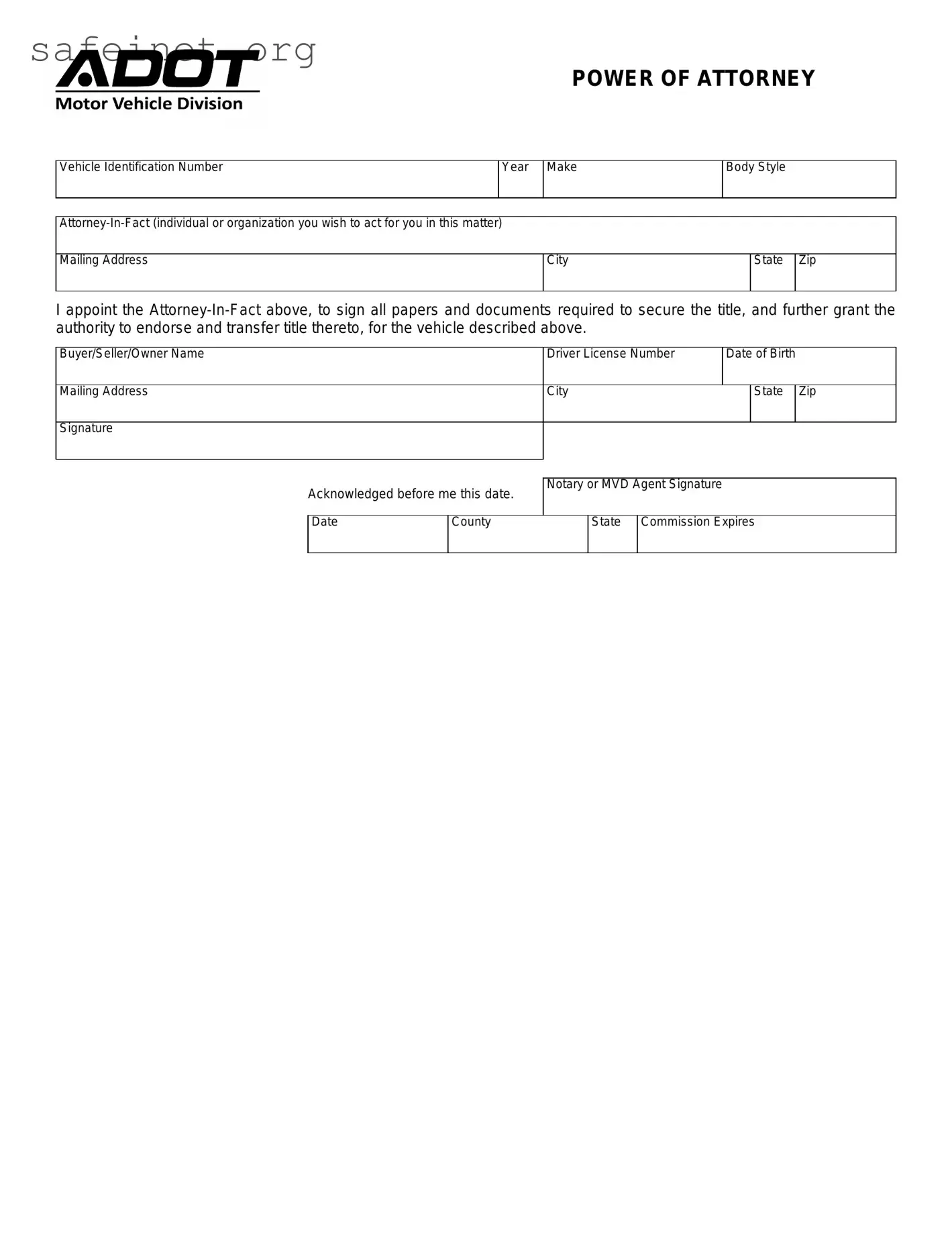What is a Vehicle POA ADOT form?
The Vehicle Power of Attorney (POA) form is a legal document that allows one person to authorize another individual to act on their behalf regarding vehicle-related matters. This may include tasks like registering a vehicle, transferring ownership, or obtaining title documents. It is often used when the vehicle owner is unable to be present to handle these tasks due to various reasons, such as illness, out-of-state travel, or other personal circumstances.
Who can complete a Vehicle POA ADOT form?
Any registered owner of a vehicle can complete the Vehicle POA ADOT form. It must be signed by the owner granting authority to another person. The person receiving the power of attorney can be a family member, friend, or a trusted individual. However, it's essential to choose someone you trust, as they will be able to make decisions about your vehicle on your behalf.
How do I fill out the Vehicle POA ADOT form?
To fill out the form, you will need to provide basic information about both the vehicle and the parties involved. This includes the vehicle identification number (VIN), make, model, and year of the vehicle. Additionally, you must include the names and addresses of both the vehicle owner and the individual receiving the power of attorney. After completing the form, both parties should sign and date it. If required, some states may also request notarization for added validity.
Is there a fee associated with the Vehicle POA ADOT form?
Generally, there is no fee to complete the Vehicle POA ADOT form itself; however, fees might apply for vehicle registration, title transfers, or other related services at the Department of Motor Vehicles (DMV) or similar agency. It's important to check with your local DMV for any applicable fees and procedures in your jurisdiction.
How long is a Vehicle POA ADOT form valid?
The Vehicle POA ADOT form is typically valid until the specified tasks are completed or until the vehicle owner revokes the power of attorney. The duration of validity may also depend on state laws. It’s advisable to keep a copy of the form for your records and to review it periodically to ensure it aligns with your current needs and intentions.
What should I do if I need to revoke a Vehicle POA ADOT form?
If you decide to revoke the Vehicle POA, you must provide written notice to the individual who was given the power of attorney. You should also notify the DMV or relevant agency to ensure that they update their records accordingly. Creating a new POA form or submitting a revocation form may be necessary, depending on the requirements of your state. Always keep a copy of the revocation document for your records.

